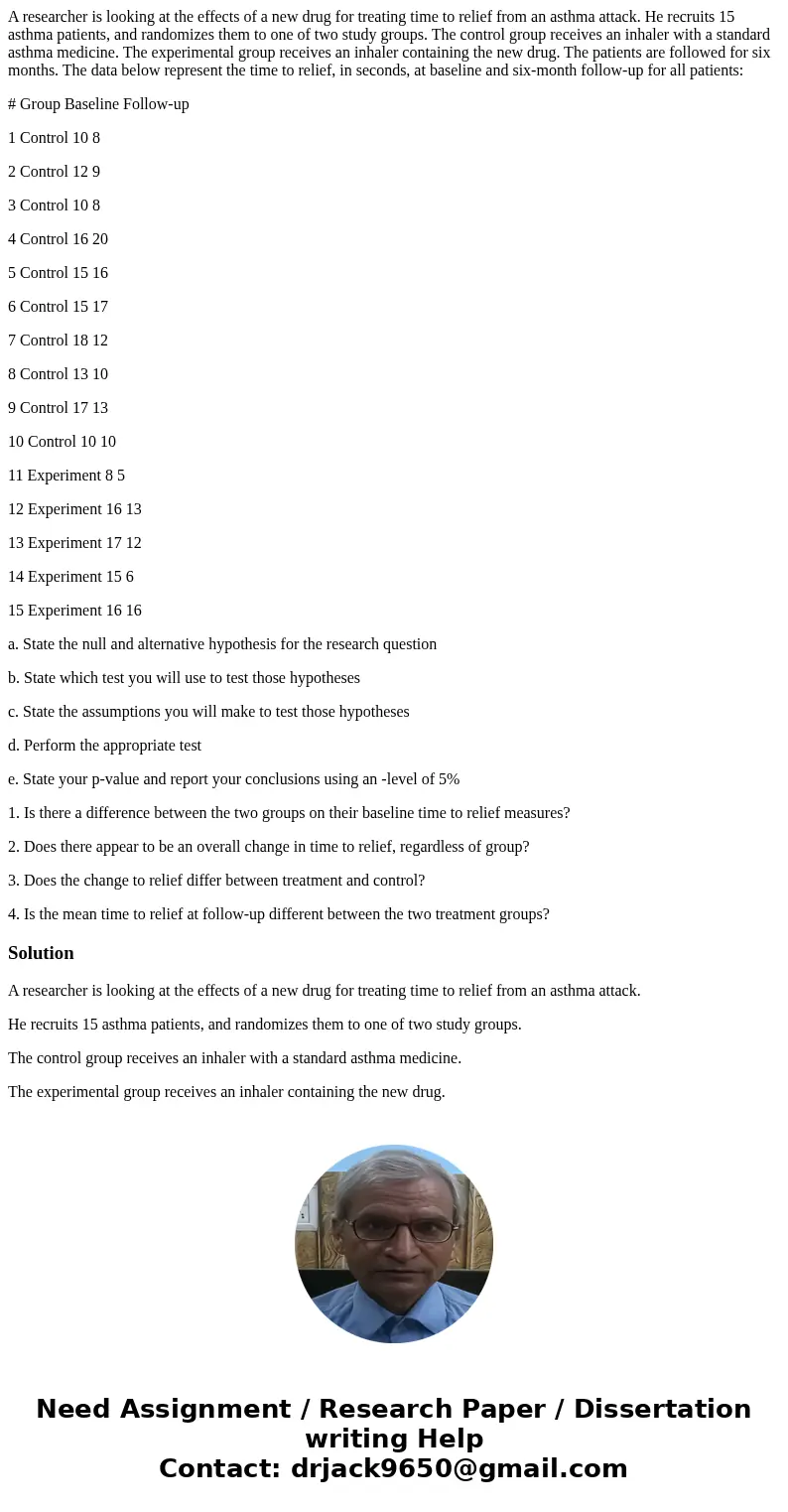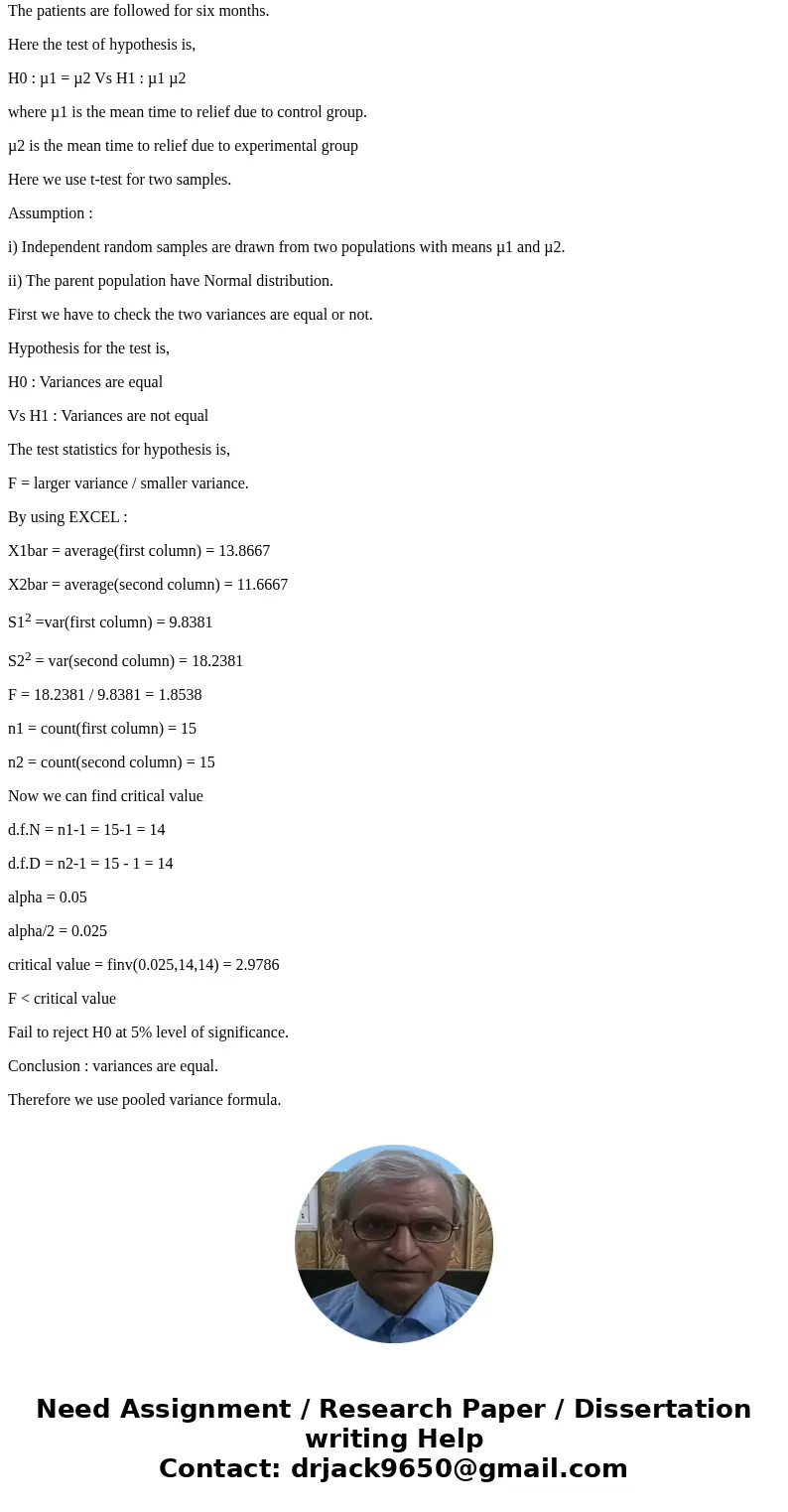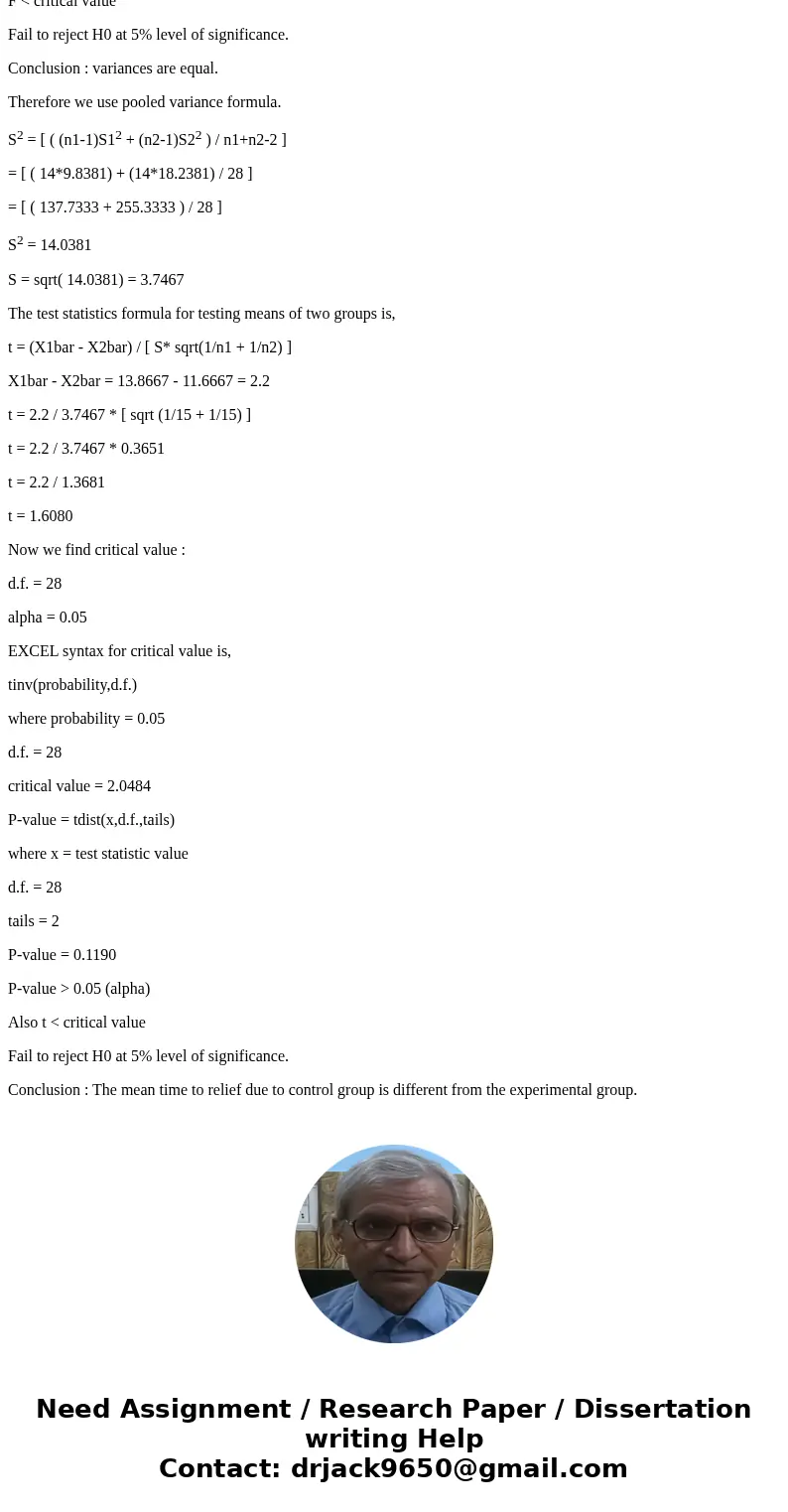A researcher is looking at the effects of a new drug for tre
A researcher is looking at the effects of a new drug for treating time to relief from an asthma attack. He recruits 15 asthma patients, and randomizes them to one of two study groups. The control group receives an inhaler with a standard asthma medicine. The experimental group receives an inhaler containing the new drug. The patients are followed for six months. The data below represent the time to relief, in seconds, at baseline and six-month follow-up for all patients:
# Group Baseline Follow-up
1 Control 10 8
2 Control 12 9
3 Control 10 8
4 Control 16 20
5 Control 15 16
6 Control 15 17
7 Control 18 12
8 Control 13 10
9 Control 17 13
10 Control 10 10
11 Experiment 8 5
12 Experiment 16 13
13 Experiment 17 12
14 Experiment 15 6
15 Experiment 16 16
a. State the null and alternative hypothesis for the research question
b. State which test you will use to test those hypotheses
c. State the assumptions you will make to test those hypotheses
d. Perform the appropriate test
e. State your p-value and report your conclusions using an -level of 5%
1. Is there a difference between the two groups on their baseline time to relief measures?
2. Does there appear to be an overall change in time to relief, regardless of group?
3. Does the change to relief differ between treatment and control?
4. Is the mean time to relief at follow-up different between the two treatment groups?
Solution
A researcher is looking at the effects of a new drug for treating time to relief from an asthma attack.
He recruits 15 asthma patients, and randomizes them to one of two study groups.
The control group receives an inhaler with a standard asthma medicine.
The experimental group receives an inhaler containing the new drug.
The patients are followed for six months.
Here the test of hypothesis is,
H0 : µ1 = µ2 Vs H1 : µ1 µ2
where µ1 is the mean time to relief due to control group.
µ2 is the mean time to relief due to experimental group
Here we use t-test for two samples.
Assumption :
i) Independent random samples are drawn from two populations with means µ1 and µ2.
ii) The parent population have Normal distribution.
First we have to check the two variances are equal or not.
Hypothesis for the test is,
H0 : Variances are equal
Vs H1 : Variances are not equal
The test statistics for hypothesis is,
F = larger variance / smaller variance.
By using EXCEL :
X1bar = average(first column) = 13.8667
X2bar = average(second column) = 11.6667
S12 =var(first column) = 9.8381
S22 = var(second column) = 18.2381
F = 18.2381 / 9.8381 = 1.8538
n1 = count(first column) = 15
n2 = count(second column) = 15
Now we can find critical value
d.f.N = n1-1 = 15-1 = 14
d.f.D = n2-1 = 15 - 1 = 14
alpha = 0.05
alpha/2 = 0.025
critical value = finv(0.025,14,14) = 2.9786
F < critical value
Fail to reject H0 at 5% level of significance.
Conclusion : variances are equal.
Therefore we use pooled variance formula.
S2 = [ ( (n1-1)S12 + (n2-1)S22 ) / n1+n2-2 ]
= [ ( 14*9.8381) + (14*18.2381) / 28 ]
= [ ( 137.7333 + 255.3333 ) / 28 ]
S2 = 14.0381
S = sqrt( 14.0381) = 3.7467
The test statistics formula for testing means of two groups is,
t = (X1bar - X2bar) / [ S* sqrt(1/n1 + 1/n2) ]
X1bar - X2bar = 13.8667 - 11.6667 = 2.2
t = 2.2 / 3.7467 * [ sqrt (1/15 + 1/15) ]
t = 2.2 / 3.7467 * 0.3651
t = 2.2 / 1.3681
t = 1.6080
Now we find critical value :
d.f. = 28
alpha = 0.05
EXCEL syntax for critical value is,
tinv(probability,d.f.)
where probability = 0.05
d.f. = 28
critical value = 2.0484
P-value = tdist(x,d.f.,tails)
where x = test statistic value
d.f. = 28
tails = 2
P-value = 0.1190
P-value > 0.05 (alpha)
Also t < critical value
Fail to reject H0 at 5% level of significance.
Conclusion : The mean time to relief due to control group is different from the experimental group.



 Homework Sourse
Homework Sourse